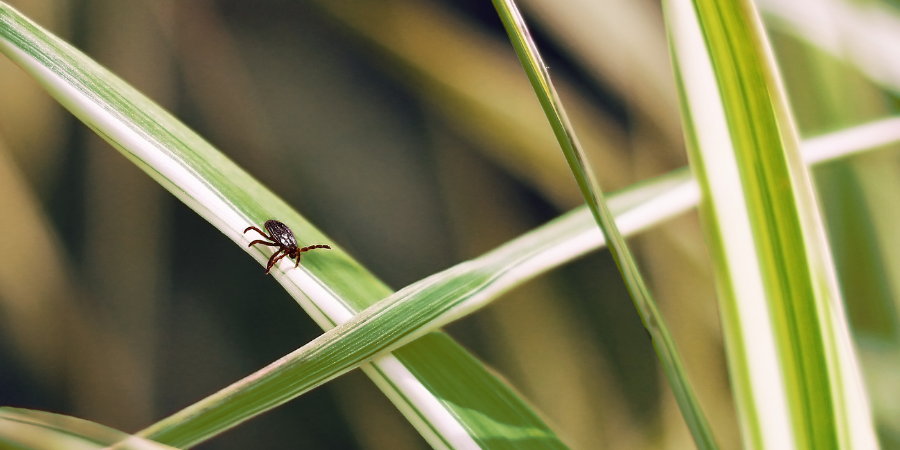



HOW TO PROTECT YOURSELF AGAINST LYME DISEASE AND TBE DURING SPRING WALKS?
14 April 2025
Spring is a time of increased tick activity
Spring walks in the forest, park or meadow are a great way to relax and connect with nature. Unfortunately, in such places it is easy to come across ticks that can carry dangerous diseases such as Lyme disease or tick-borne encephalitis (TBE). That is why it is worth remembering the rules of protection against ticks and knowing the first symptoms of tick-borne diseases.
What diseases do ticks transmit?
Ticks are carriers of many dangerous pathogens. The most common tick-borne diseases are:
- Lyme disease – a bacterial disease that may present with erythema migrans, joint pain, and neurological symptoms.
- Tick-borne encephalitis (TBE) – a viral disease that can lead to serious neurological complications.
- Rarer infections, such as anaplasmosis or babesiosis, can also cause serious health problems.
Where can you catch a tick?
Ticks are not found exclusively in forests. They can also be found:
- in city parks,
- in meadows and clearings,
- in home gardens,
- on allotments and in tall grass.
That's why even a regular walk with your dog can end with a dangerous prick.
How to recognize a tick bite?
A tick bite is painless, so it often goes unnoticed. It is worth paying attention to:
- Erythema migrans – characteristic redness around the injection site,
- flu-like symptoms: fever, headache, muscle pain,
- concentration problems, joint pain, fatigue – these may appear even several weeks after the injection.
How to effectively protect yourself against ticks?
To minimize the risk of being bitten, follow these rules:
1. Appropriate clothing
- Wear long pants, socks, and long-sleeved shirts.
- Tuck your pants into your shoes – it will be harder for ticks to get to your skin.
2. Use repellents
- Use repellents containing DEET or picaridin.
3. Check your body carefully after a walk
- Especially the groin area, armpits, behind the ears, and the bends of the knees and elbows.
- The tick should be removed as soon as possible – preferably using tweezers or a special lasso.
4. Consider vaccination
- Vaccination against tick-borne encephalitis (TBE) is an effective form of protection – also available in our facilities.
If you notice redness or disturbing symptoms after a walk in a green area, do not delay visiting a doctor.
Want to know more? Listen to podcasts WHAT DOES YOUR DOCTOR SAY?.
Cycle TICK-BORNE DISEASES explains in an accessible way how Lyme disease is treated, when it is worth doing tests, and what to do after a tick bite.
Who we are
In our work, we are guided by the idea of a family doctor who provides the patient with comprehensive care at all times, not only when they are ill. Our mission is to take care of the health of residents on a daily basis. We provide health education and promote prevention.
Copyright © Wrocław 2021 NZOZ Your Doctor Sp. z o. o. All Rights Reserved.
Website created by KomuKoncept: www.komukoncept.pl






